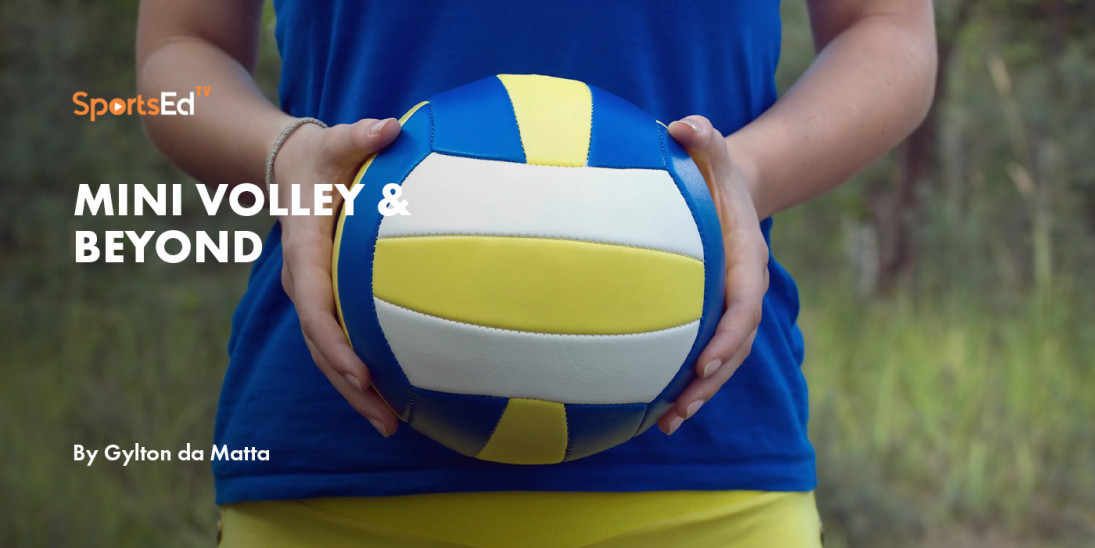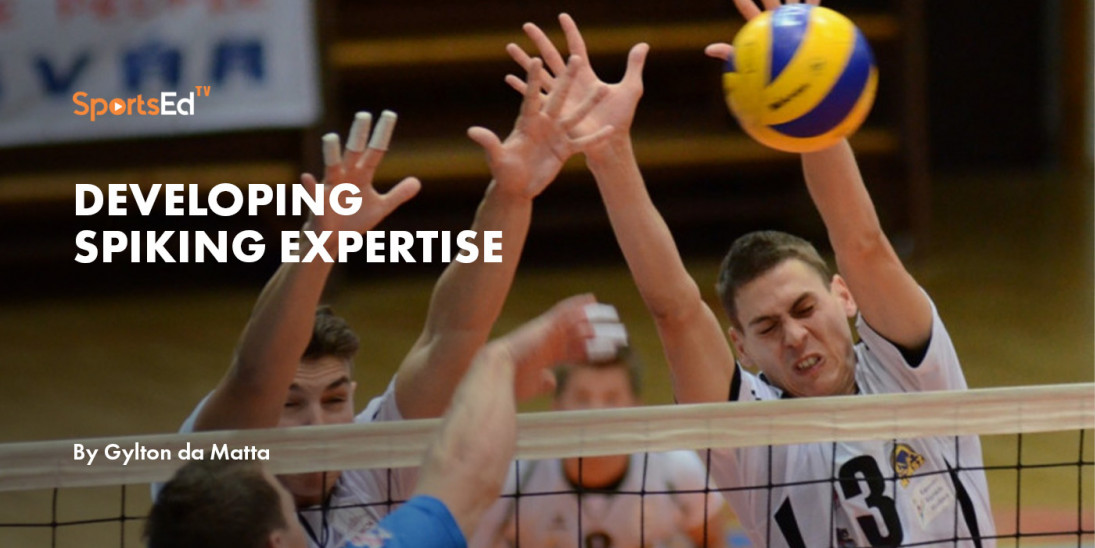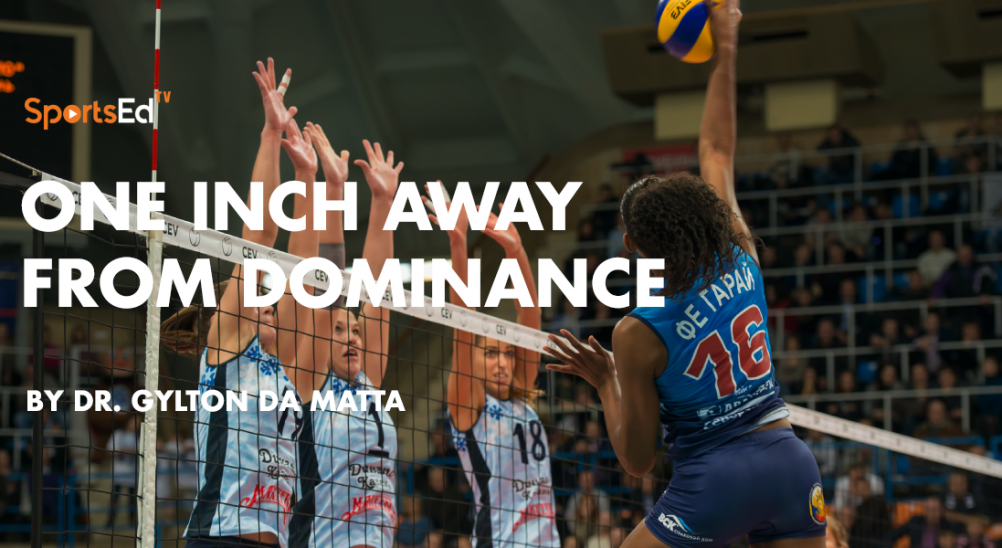Volleyball
Welcome and thanks for visiting...

Mini Volley & Beyond

From Alaska to Argentina and across the line of the Equator Mini Volleyball has transformed and evolved amid a health pandemic.
The COVID- 19 outbreak and concomitant shutdown of organized sports and public sports facilities in most countries resulted in crucial changes in youth’s daily routines and their opportunities for being active (Rundle et al., 2020; Schmidt et al., 2020), exacerbating all the risk factors for weight gain (Rundle et al., 2020).
All over the world, youth volleyball programs have demonstrated a special ability to adapt the COVID-19 pandemic and children have been determined to play volleyball at their homes, backyard, parks and across their streets.
Both in Italy, the United States in Brazil there has been an emerging movement among children to play modified volleyball using the Mini Volley as their model to format rules, facilitate game understanding and scale ball/ court/ net so children can be successful and enjoy the game. (Da Matta, 2004).
During the first lockdown, club activity and Mini Volley lessons were suspended in Italy. All volleyball activities were suspended in the United States. In Brazil, with many public-school classes cancelled children emerged from the neighborhoods and went to play volleyball in the parks and on the beaches.
Mini volleyball requires smaller courts, less participants and children can negotiate to modify the rules according to their skill levels. As a result, volleyball officers and coaches have observed a high rate of participation of youth volleyball not only in Brazil but in fact, across the world.
The FIVB office in Asia has registered an increase of volleyball participation among youth playing beach volleyball but, more so, among children playing informally and spontaneously in yards, parking lots, beaches, villas, in between buildings in major cities in Asia and in every space, children could set up a net or a rope to play.
Mini Volley in Italy, United States and Brazil. MINI VOLLEY VIDEO WITH ROPE.
With the improvement of the situation during the summer in Europe and in the Northern hemisphere several camps, clinics and outdoor opportunities were offered freely, but the resolve of children to play was a “tsunami”. The same phenomenon was observed in Brazil and in Africa with children, women and even people who were physically challenged playing volleyball with a bounce, with modified rules and played sitting volleyball, a Paralympic modality.
Playing Mini Volley outdoors was a great initiative that allowed us to play sports safely and in full compliance to public health guidelines. In many cases, coaches expanded the Mini Volley rules emphasizing 4 v 4, 3 v 3 and 2 v 2 games to assure social distancing. No hugs were allowed, only elbow bumps and the use of masks was highly recommended for spectators
Among children the use of masks demonstrated that it is possible to adapt and comply with health guidelines while playing Mini Volleyball so, it was no surprise that in September most professional league teams started their pre-seasons and individual trainings with the use of masks. But while the imminent possibility of a second wave of the virus was real, in Italy and most Europe Mini Volley continued to be offered outdoors.
The Mini Volley initiative inspired older players to be involved but across the world a tough reality choked the youth sports community when reports from global health departments revealed that among teenager’s mental health issues were on the rise. The result of the prolonged effect of COVID-19 threat brought teens into a state of fear, anxiety, social isolation, as they experienced the lockdown, also impacting body image issues through lack of physical activity and in many cases, causing depression.
Cooler temperatures required some events to be held indoors but with a limitation of capacity. In Colorado, in a gym with 6 volleyball courts only 40 people were allowed. The adherence to playing Mini Volley continue to increase across South America and in Africa.
In countries like Singapore and South Korea the smart utilization of spaces was reinforced with the full use of masks, sanitation (washing hands & cleaning balls) as well as social distancing. At the peak of Autumn, from October until this writing, our mini volleyball group has continued to train outside at the soccer fields. Clearly the training practice had to undergo some changes and a change in children’s attitude towards playing Mini Volley was noticeable.
Children were playing with more enthusiasm, but they were also teaching each other and motivating teens to join them. Their attitude was simple: “_ No matter what, we want to play!” Truly, it did not matter. The goal was to continue exercising, get outside, socializing and being "together" safely.
While playing by themselves, children have incorporated many other activities in their sport’s “menu”. We have observed a burst of gymnastics on grass, children playing footvolley, frisbee, team handball, coed soccer, and lots of 1 v 1 versions of Mini Volleyball.
From the coaches’ standpoint socializing in distance, getting involved with some sort of volleyball games, being physically active and embracing multi-sports activities were all positive and a joy to observe.
Based on the fact of how children love to play volleyball, we foresee families re-designing their basements, home spaces, garages, back yards, front yards, and even public playgrounds in which a Mini Volley court will be built or conceptualized.
Relays, Hop Scotch, and Little Gymnastics in Mini Volley by Kids
In Brazil, USA, and Italy a common procedure became part of warmup routines, as coaches adopted a 15–20-minute free play or free activity at the beginning of practices which also allowed Mini Volley participants (who are children from 7 to 12 years of age) with some option to have a healthy snack and to socialize (while distancing). The idea was a success and it all made sense because most players would come to our parks and after hours sitting at school with the mask a prolonged free moment seemed an awesome idea. It was really nice to see how the children, with their masks, organized themselves: some simply taking a walk; others took a circle and invented a game.
In general, we have seen great respect for the rules: all of them always wore the mask from the beginning to the end of training and, despite their young age, they showed great responsibility towards each other, implicitly developing the team concept dear to us.
In our minds, volleyball has clearly undergone an elevated role by being open to include a diverse variety of sports with freedom, fun and focus on being thankful to the opportunity to be outdoors.
Overcoming the COVID pandemic has been uplifting for every child, regardless their age, they are aware but extremely joyful to be playing beach volleyball, grass volleyball, volley with a bounce, two bounces and no bounces. To bounce back from this pandemic, it will be critical to see a child’s solidarity among all nations in the world. Poor, rich, industrialized or not, we need to support each other and make sure that all communities will go beyond this pandemic and thrive with humanity and great health!
Due to some cold fronts, the limitations and heavy outdoor clothing made some movements difficult. However, we still managed to develop games that included a ball for each child, still provided fun activities that included family members and teenagers from the neighborhood.
Cooler in Europe, and warmer in Africa, Asia and Brazil, the bulk of the activity involved routes, small group relay races and lots of fun volleyball movements. Going into the winter or into the hot summer, we had to make sure everyone was safe and prevent the children from remaining locked inside their homes. Helping children to cope mentally and psychologically required some mindful intervention. In many countries, volleyball coaches have incorporated YOGA and students have enjoyed it a great deal.
In one grass field it is possible to set up five Mini Volleyball courts, three strength training & conditioning circuits and four team handball and/or frisbees mini fields. It is a multisport playground!

Volleyball is a sport that can be played with the whole body, therefore, we also managed to continue the multi-sports project that we had included at the beginning of the year in a multidisciplinary approach. In October-November we organized four Yoga lessons for children and today we have started Judo. Of course, in Brazil it is common to see kids playing the capoeira, playing soccer and then, beach volleyball and all happens in less than a 1-hour period. Clearly always outdoors!
To further lighten the period, as much as possible, during the December/January period we decided to organize a short greeting message for the Christmas holidays, and special greetings for the New Year’s…we were sensitive to the fact that many families lost loved ones…we want to offer some joy but demonstrated respect and compassion at the same time. Overall, it was fun and relaxing!
The number of children playing Mini Volley continues to increase and now we see the impact of such participation from Alaska to Argentina, from Cairo to Cape Town, in India, in Singapore and across all the Pacific Islands as well.
It is a major hope that the level of individual and collective consciousness around COVID public health policies, can be translated into environmental, ecological and towards reverting global warming. It is all very green, ecological and environmental. MINI VOLLEY IS COOL!
Dr. Daniele Battocchio is the Technical Manager and one of the Directors of Polisportiva San Pio X, Rovigo in Italy. daniele.battocchio@gmail.com
Dr. Gylton Da Matta is the Executive Director of Volleyball at SportsEdTV, Founder & President of SportsEdTV Foundation based in Fort Collins, CO, USA. gdamatta@sportsedtv.com
- Both authors have created a group of study and research called International Mini Volley Academy with the participation of top coaches and scholars (ITA, CZH, USA, BRA, ARG, NER, CAN, AUS) who share the same passion for Mini Volley and reflect on how to teach developmentally appropriate volleyball for children all over the world.
“During this pandemic if volleyball became a family preference, the Mini Volley became the favorite activity among children in many countries. “
Dr. Da Matta – FIVB Technical Evaluator.
References
Da Matta, G. (2004) The influence of deliberate practice and social support systems on the
development of expert and intermediate women volleyball players in Brazil. Published doctoral dissertation, University of South Carolina. Michigan Electronic Library.
Rundle, A.G., Park, Y., Herbstman, J.B., Kinsey, E.W., and Wang, Y.C. (2020). COVIDâ19–Related School Closings and Risk of Weight Gain Among Children. Obesity 28, 1008–1009.
Schmidt, S.C.E., Anedda, B., Burchartz, A., Eichsteller, A., Kolb, S., Nigg, C., Niessner, C., Oriwol, D., Worth, A., and Woll, A. (2020). Physical activity and screen time of children and adolescents before and during the COVID-19 lockdown in Germany: a natural experiment. Sci. Rep. 10, 21780.





